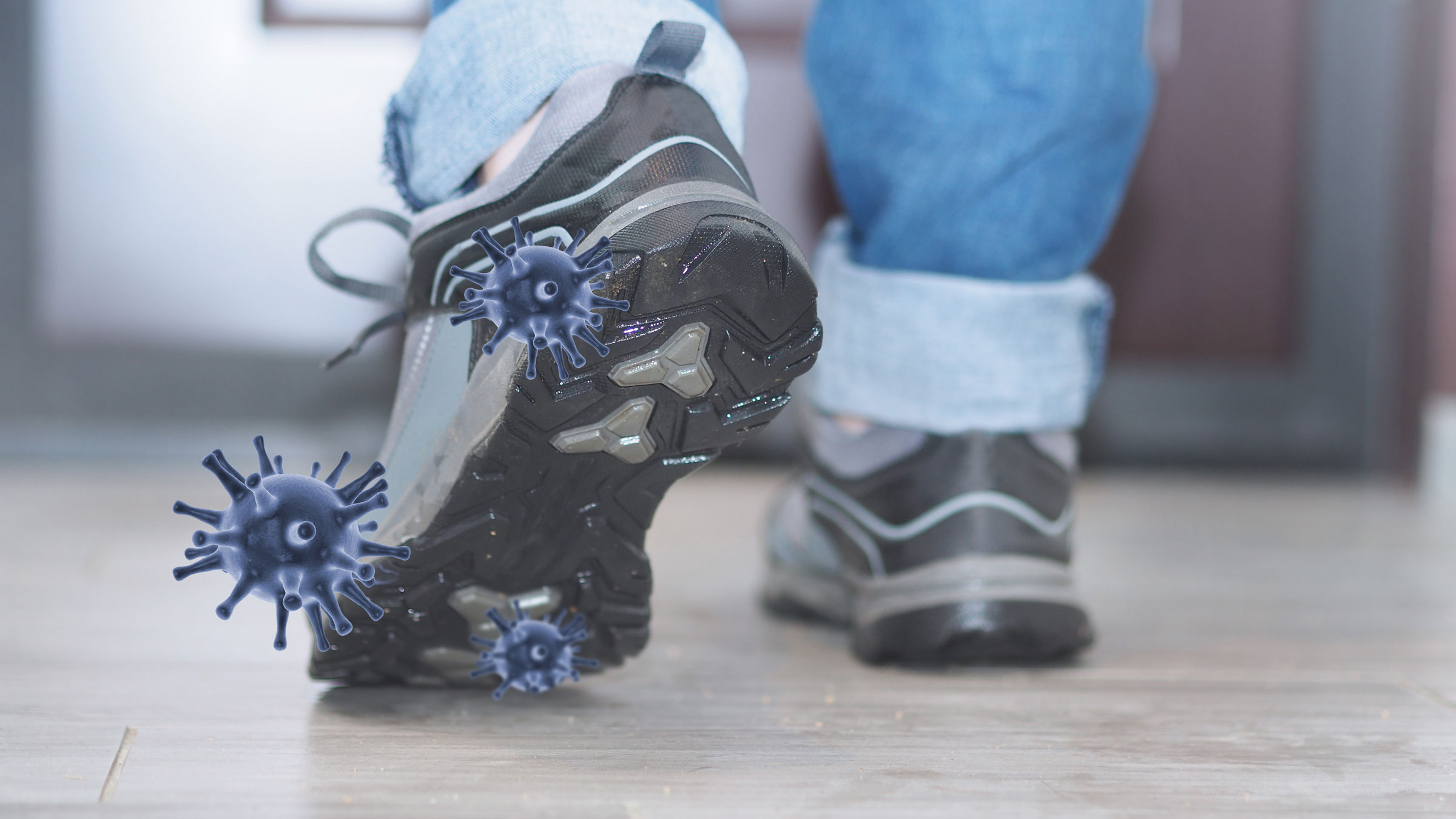
In veterinary hospitals and clinics, in quarantine facilities, and at equestrian venues, biosecurity is of great importance to limit the spread of infectious disease. Bacteria lurk in many potential fomites, such as in dirt on the bottom of footwear. One component of biosecurity strategies uses foot baths, which not only help to remove some contaminants but also serve as an alert system to people entering and exiting a restricted area within an equine facility.
While many biosecurity measures are taken on a property, foot baths do not always receive high priority. Infrequent changes to the antiseptic enable buildup of organic matter that does little to disinfect footwear.
An Egyptian study reviewed the efficacy of liquid, semi-liquid and dry foot baths using five disinfectants in reducing Streptococcus equi subspecies equi bacterial populations [Shimaa A.E. Nasr and Arafa, A.A. A Novel Foot Bath for horse Dwelling. International Journal of Veterinary Science Mar 2019, vol. 8, no. 2; pp. 105-112]. The liquid bath diluted disinfectant with water; the semi-liquid mixed two parts antiseptic to three parts surfactant; the dry form mixed disinfectant with lime. All concentrations of disinfectant were mixed to 5% concentration except Virkon at 2%.
The results indicated:
- Disinfectant-soaked mats are not always effective in reducing bacterial load and contamination.
- Liquid disinfectant foot baths are not as effective as semi-liquid foot baths although evaporation of the liquid after a day or two then provides higher concentration of disinfectant.
- The semi-liquid foot bath achieved the best results. Although there is a small delay in its action, it retains the capacity to remain cleaner than liquid foot baths.
- Allowing the soles of shoes to dry after stepping in a Virkon bath improves reduction in bacterial numbers.
Foot baths need to be replaced frequently—at least every 2-3 days—to maximize disinfectant activity and to remove organic debris that accumulates from stepping into the baths. Without routine replacement of disinfectant, biofilm-forming bacteria may transfer to the area from footwear. Foot baths do not sterilize footwear but rather serve to disinfect to lessen spread of the contaminating infection around a facility.








